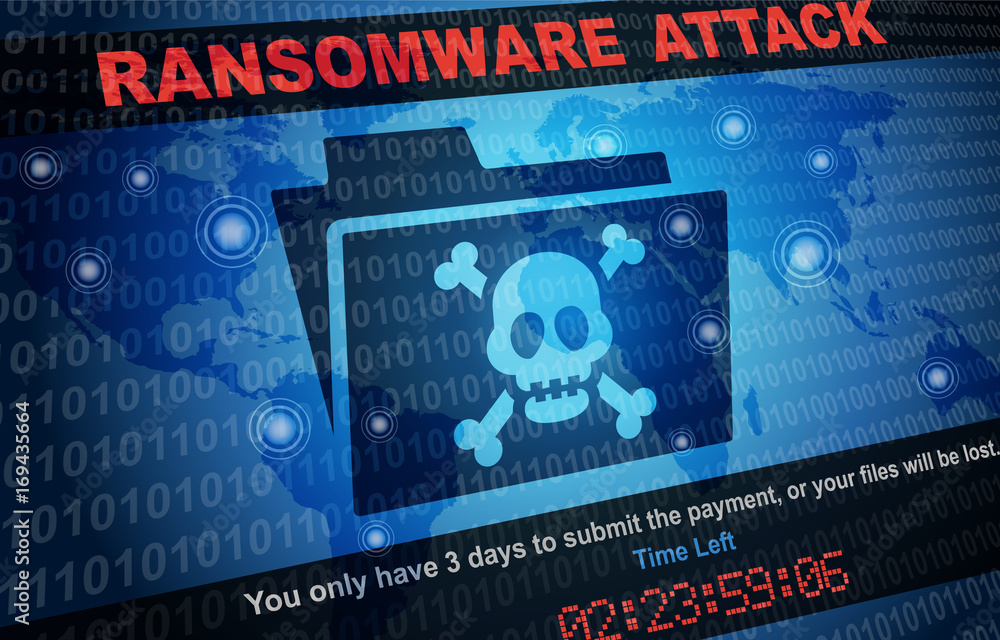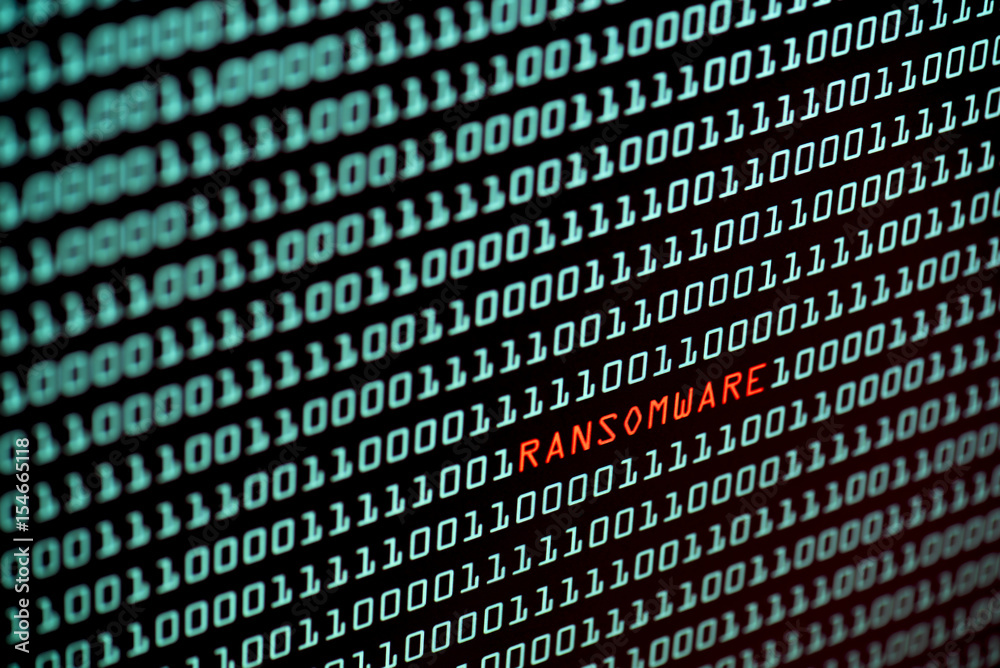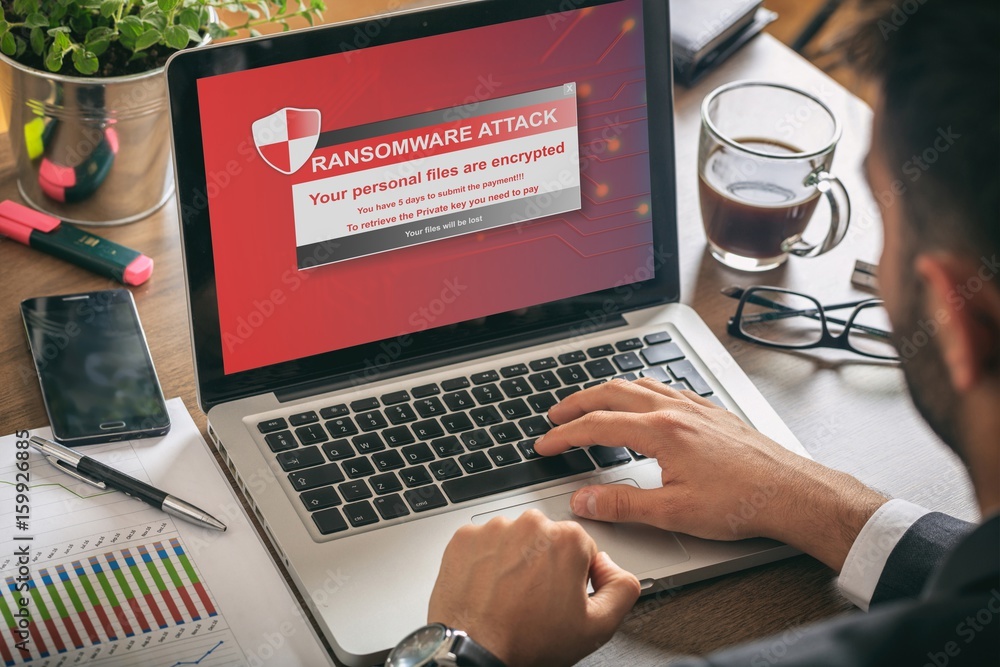Ransomware Uncovered: Prevention, Detection, and Recovery
In recent years, the digital landscape has witnessed an alarming surge in ransomware attacks, a type of cybercrime that poses a significant threat to individuals, organizations, and even governments. Ransomware attacks involve malicious actors infiltrating computer systems and encrypting vital data, rendering it inaccessible until a ransom is paid. This form of extortion has evolved into a highly lucrative criminal enterprise, resulting in massive financial losses, data breaches, and operational disruptions for victims.
The complexity and scale of ransomware attacks have escalated dramatically, with attackers employing sophisticated techniques, exploiting vulnerabilities, and utilizing social engineering tactics to infiltrate even well-defended networks. The impact of such attacks extends beyond immediate financial losses, affecting an organization’s reputation, customer trust, and regulatory compliance.
To combat the escalating threat of ransomware attacks, a comprehensive approach that encompasses prevention, detection, and recovery strategies is imperative. Recognizing the need to safeguard critical data and digital infrastructure, organizations must adopt a proactive stance to minimize their vulnerability to ransomware threats.
The escalating threat of ransomware attacks necessitates a comprehensive approach that encompasses prevention, detection, and recovery strategies. In this article we will explore more about that.
Understanding Ransomware
Definition of ransomware and its operation
Ransomware is a malicious software designed by cybercriminals to encrypt a victim’s data or lock them out of their own systems, making the data inaccessible. The attackers then demand a ransom payment, typically in cryptocurrency, in exchange for providing the decryption key or restoring access to the compromised systems. Ransomware operates on the principle of extortion, leveraging the victim’s need for their own data to force them into paying the ransom.
The operation of ransomware can be broken down into several key steps such as infiltration, execution, encryption, ransom note, payment and key delivery and also decryption.
Attackers gain initial access to a victim’s system through various means, such as malicious email attachments, infected software downloads, compromised websites, or exploiting software vulnerabilities. Once inside the system, the ransomware is executed. It may spread to other connected devices or network shares, seeking out files to encrypt. In encryption phase, the ransomware uses strong encryption algorithms to lock the victim’s files or even the entire system. The victim is then presented with a ransom note, which explains the situation and provides instructions for making the ransom payment.
In ransom note, a message is displayed to the victim, often containing information on how to pay the ransom and receive the decryption key. If the victim decides to pay the ransom, they typically need to acquire cryptocurrency and follow the instructions provided in the ransom note. Once the payment is made, the attackers may provide the decryption key to unlock the encrypted data. Upon receiving the decryption key, the victim can use it to decrypt their files and regain access to their system.
How attackers gain access to systems
Phishing Emails that often contain malicious attachments or links that, when clicked, execute the ransomware on the victim’s system. Malicious downloads, cybercriminals create fake websites or compromise legitimate ones to distribute infected software. Attackers exploit weaknesses in software, operating systems, or network configurations. They may use known vulnerabilities for which patches have not been applied, allowing them to gain unauthorized access. Attackers may brute-force or use stolen credentials to gain access to systems via remote desktop connections, allowing them to directly install ransomware. Attackers manipulate individuals into divulging sensitive information, such as login credentials or personal details, which they then use to gain unauthorized access.
These are some common methods that attackers use to gain unauthorized access to systems and initiate ransomware attacks. To defend against ransomware attacks, it is crucial to employ a combination of cybersecurity best practices, regular software updates, employee training, and strong security measures to prevent attackers from gaining a foothold in the system and executing their malicious activities.
The Impact of Ransomware

Real-world examples of significant ransomware attacks and their consequences
Several significant ransomware attacks have occurred in recent years, causing substantial disruptions, financial losses, and highlighting the increasing threat posed by ransomware. Here are a few real-world examples of notable ransomware attacks and their consequences.
WannaCry was a widespread ransomware attack that targeted computers running Microsoft Windows operating systems. It exploited a vulnerability in Windows’ Server Message Block (SMB) protocol. The attack affected over 200,000 computers in more than 150 countries, including organizations like the UK’s National Health Service (NHS). The attack led to canceled surgeries, delayed patient care, and significant operational disruptions.
NotPetya, also known as Petya or ExPetr, was another highly impactful ransomware attack. It targeted businesses primarily in Ukraine and then spread globally. NotPetya used the same SMB vulnerability as WannaCry but had more destructive intentions. It caused massive disruptions to companies like Maersk, a major shipping conglomerate, and resulted in estimated losses of hundreds of millions of dollars.
JBS, one of the world’s largest meat processing companies, fell victim to a ransomware attack that disrupted its operations in North America and Australia. The attack temporarily shut down multiple processing facilities, impacting meat supply chains and potentially leading to shortages in the market.
The Kaseya ransomware attack targeted managed service providers (MSPs) that used the Kaseya VSA software. The attackers exploited a vulnerability to distribute ransomware to numerous businesses through their MSPs. This supply-chain attack affected thousands of businesses worldwide, causing operational disruptions and highlighting the potential impact on interconnected ecosystems.
These examples underscore the need for robust cybersecurity measures, regular software updates, secure backup strategies, and proactive incident response plans to mitigate the risks posed by ransomware attacks.
Discussion of financial losses, data breaches, and reputational damage suffered by businesses and individuals
Ransomware attacks can have a cascading impact on businesses and individuals, causing significant financial losses, data breaches, and reputational damage.
Organizations often face the difficult decision of whether to pay the ransom to regain access to their data. Ransom payments can vary widely, from thousands to millions of dollars, depending on the target and the severity of the attack. Ransomware attacks can cripple businesses by causing prolonged downtime. This leads to lost productivity, missed business opportunities, and revenue decline.
Ransomware attacks often involve data breaches, where attackers gain unauthorized access to sensitive information before encrypting it. Stolen data exploitation and regulatory compliance are some consequences of data breaches. Customers, clients, and partners lose trust in organizations that fall victim to ransomware attacks, especially if sensitive information is compromised. This can lead to a decline in business relationships and revenue.
The multifaceted impact of ransomware attacks, it is crucial for businesses and individuals to take proactive steps to prevent such incidents.
Prevention Strategies
Importance of proactive measures to prevent ransomware attacks
Prevention strategies are essential to defend against ransomware attacks and mitigate their potential impact. Taking proactive measures significantly reduces the risk of falling victim to such attacks and helps safeguard sensitive data, operational continuity, and reputation. One crucial aspect of prevention is software updates and patch management.
By addressing potential entry points and weak spots in advance, the likelihood of a successful ransomware attack is reduced. Preventing a ransomware attack is far more cost-effective and efficient than dealing with the aftermath. Preventive measures help maintain business operations, minimize disruptions, and protect critical systems and data. Avoiding ransomware attacks helps protect an organization’s reputation. Proactive measures ensure compliance with data protection regulations and reduce the risk of regulatory penalties.
Software updates and patch management
Software updates and patch management are critical components of a proactive cybersecurity strategy. They involve keeping software, operating systems, and applications up to date to address known vulnerabilities.
Software updates and patches contain fixes that close the vulnerabilities, making it harder for attackers to exploit them. Regular updates ensure that systems are protected against both known and potential future threats. Updates not only enhance security but also improve system stability, performance, and compatibility with other software and hardware components. Patch management solutions automate the process of identifying, testing, and deploying updates across an organization’s network, ensuring comprehensive coverage and reducing the risk of human error.
By staying ahead of potential vulnerabilities and weaknesses, organizations can significantly enhance their cybersecurity posture and minimize the risk of falling victim to these damaging attacks.
Use of strong, unique passwords and multi-factor authentication
Encourage employees to create strong passwords that include a combination of upper and lower case letters, numbers, and special characters. Avoid using easily guessable information like birthdays or names. Each account should have a unique password. Reusing passwords across multiple accounts increases the risk of a breach. Multi-Factor Authentication adds an extra layer of security by requiring users to provide two or more forms of authentication before accessing an account. This can include something they know, something they have, or something they are.
Employee training on identifying phishing attempts and malicious links
Conduct cybersecurity training sessions to educate employees about the dangers of phishing, social engineering, and how to identify suspicious emails, links, and attachments. Conduct phishing simulation exercises to test employees’ ability to recognize and report phishing attempts. This helps reinforce their training and increases awareness.
Role of firewall and antivirus software in preventing ransomware infiltration
A firewall acts as a barrier between a trusted internal network and untrusted external networks. It filters incoming and outgoing traffic, blocking potentially malicious connections and protecting against unauthorized access. Antivirus software scans files, programs, and emails for known malware and ransomware signatures. It helps detect and remove malicious software before it can cause harm.
Regular data backups and their significance in recovery
Regularly back up critical data and systems to secure off-site locations. Automated and scheduled backups ensure that in the event of a ransomware attack, you can restore your systems to a state before the attack occurred. Ensure backups are not accessible from the primary network to prevent attackers from targeting them. Implement proper access controls and encryption for backups. Develop a comprehensive data recovery plan that includes the steps to restore systems and data from backups. Regularly test the recovery process to ensure its effectiveness.
Incorporating these practices into an organization’s cybersecurity strategy significantly reduces the risk of falling victim to ransomware attacks. While no prevention strategy can guarantee absolute security, a layered and proactive approach increases the difficulty for attackers and enhances the overall resilience of the organization’s digital environment.
Detection Techniques

Introduction to early detection as a critical defense mechanism
Early detection plays a critical role in defending against ransomware attacks and other cyber threats. Detecting malicious activity as soon as possible allows organizations to respond promptly, contain the threat, and mitigate potential damage.
Early detection involves identifying signs of unauthorized or malicious activity in a network or system before it can cause significant harm. By detecting threats early, organizations have a better chance of stopping attacks in their tracks and minimizing their impact.
Role of intrusion detection systems (IDS) and intrusion prevention systems (IPS)
Intrusion Detection Systems (IDS) are tools that monitor network traffic for signs of suspicious or unauthorized activity. They analyze network packets, logs, and other data sources to identify patterns that could indicate an ongoing attack. IDS generate alerts for further investigation. Intrusion Prevention Systems (IPS) are similar to IDS but have the added capability to take action to prevent identified threats. They can block or limit network traffic associated with malicious activity in real-time.
Monitoring network traffic and anomaly detection
Monitoring network traffic helps identify unusual patterns, such as unexpected communication between systems, unusual data transfers, or connections to known malicious IP addresses. Anomaly detection involves establishing a baseline of normal behavior and then identifying deviations from that baseline. Unusual spikes or changes in network traffic, user behavior, or system performance can indicate potential attacks.
Behavior-based detection and its effectiveness
This approach focuses on understanding the typical behavior of users, applications, and systems. Deviations from established behavior profiles can be indicative of a compromise or attack. This method is particularly effective against new and previously unseen threats. Behavior-based detection often leverages machine learning and artificial intelligence algorithms to analyze vast amounts of data and detect subtle anomalies that might go unnoticed by traditional methods.
Implementation of advanced threat intelligence tools
These feeds provide real-time information about known malicious IPs, domains, and other indicators of compromise. Integrating threat intelligence into security tools helps identify and block connections to malicious sources. Threat intelligence tools often use sandboxing to analyze suspicious files or links in a controlled environment. This helps detect and analyze new and sophisticated threats without exposing the organization’s systems.
Implementing these detection techniques and tools as part of a comprehensive cybersecurity strategy helps organizations identify potential ransomware attacks early and respond effectively. Early detection, combined with other preventive and proactive measures, enhances an organization’s ability to defend against evolving cyber threats and minimize the impact of security incidents.
Recovery Strategies
Recovery strategies are essential for mitigating the damage caused by ransomware attacks and restoring operations. A well-defined ransomware recovery plan is crucial to ensure a structured and effective response.
A recovery plan outlines the steps, responsibilities, and procedures to follow in the event of a ransomware attack. It helps minimize downtime, ensure a coordinated response, and reduce confusion during a high-stress situation. By having a pre-determined plan, organizations can respond swiftly and effectively, limiting the impact of the attack on data, systems, and operations.
As soon as a ransomware attack is detected, affected systems should be isolated from the network to prevent the malware from spreading further. Network segmentation and access controls can help contain the attack’s lateral movement, preventing it from affecting other parts of the network.
Regularly maintained and secure backups are a primary means of recovery. Having clean and recent backups allows organizations to restore encrypted data to a pre-attack state. Backups should be stored in a separate, isolated environment to ensure they are not compromised by the attack.
Paying the ransom is generally discouraged due to ethical concerns, potential funding of criminal activities, and the lack of guarantees that the attackers will provide a decryption key. Ransom payment does not ensure full data recovery or protection from future attacks. It’s important to assess the risks and consequences carefully before considering this option.
Engaging cybersecurity experts or incident response teams is crucial for effectively assessing the extent of the attack, identifying vulnerabilities, and guiding recovery efforts. Experts can help organizations make informed decisions, implement the right recovery strategies, and strengthen defenses to prevent future attacks.
Regular testing and updating of the ransomware recovery plan are essential to ensure its effectiveness in addressing evolving threats and changes in the organization’s environment.
Simulated exercises and tabletop drills can help employees familiarize themselves with the recovery plan and improve response readiness.
A well-structured recovery plan, combined with proactive prevention measures and strong cybersecurity practices, strengthens an organization’s ability to recover from ransomware attacks while minimizing the potential impact on data, operations, and reputation.
Legal and Ethical Aspects
The legality and ethics of paying ransom to attackers
The issue of paying ransom to attackers in the context of ransomware attacks raises complex legal, ethical, and practical considerations.
Paying ransom to attackers is often discouraged by law enforcement agencies and cybersecurity experts due to concerns about supporting criminal activities and encouraging further attacks. However, the legality of paying ransom varies by jurisdiction. Some countries may have laws or regulations that prohibit or restrict paying ransom to certain entities or for specific purposes.
The ethics of paying ransom involve broader considerations beyond legality. Paying ransom may fund criminal organizations engaged in illegal activities, such as cybercrime, human trafficking, or terrorism. It can also incentivize attackers to continue targeting organizations and individuals, knowing they can profit from their actions.
Examination of various countries’ stances on ransom payments
In the United States, the stance on ransom payments is generally against paying attackers. The U.S. Department of the Treasury’s Office of Foreign Assets Control (OFAC) has issued advisories that emphasize the importance of complying with economic sanctions and not making payments to individuals or entities on the sanctions list. This includes some ransomware groups.
The UK’s National Cyber Security Centre (NCSC) advises against paying ransom and encourages organizations to report incidents to law enforcement. However, the decision to pay ransom is ultimately up to the victim organization.
Germany generally discourages paying ransom but recognizes that in some cases, victims may have no alternative if critical infrastructure or patient safety is at risk. However, paying ransom is not guaranteed to result in the decryption of files, and victims are encouraged to involve law enforcement.
Australia’s Cyber Security Centre also advises against paying ransom and encourages victims to seek assistance from law enforcement and cybersecurity experts. It highlights the risks of funding criminal activities through ransom payments.
It’s important to note that while some countries may officially discourage ransom payments, the decision ultimately rests with the victim organization. Organizations must carefully weigh the potential risks, ethical considerations, and legal obligations before making any decisions related to ransom payments.
Future Trends

As technology advances, ransomware attacks are likely to become even more sophisticated and challenging to detect. Threat actors may leverage artificial intelligence (AI) to enhance attack strategies, automate reconnaissance, and adapt to network defenses in real-time. They might also target Internet of Things (IoT) devices, critical infrastructure, and cloud environments. “Ransomware-as-a-Service” models could make it easier for even less skilled attackers to launch ransomware campaigns. As the digital landscape evolves, so will ransomware threats.
In the ongoing battle against ransomware, emerging technologies offer hope for stronger defenses. Machine learning and AI can be used to detect anomalous behavior and patterns, identifying ransomware before encryption occurs. Blockchain technology may enhance secure data storage and sharing, reducing the reliance on traditional backups. Automation and orchestration tools enable rapid response to attacks. Additionally, decentralized and distributed cloud infrastructure can provide greater resilience against ransomware attacks.
The evolving threat of ransomware demands proactive action. Organizations and individuals must take responsibility for safeguarding their digital assets. By embracing these practices and staying vigilant, we can collectively combat ransomware threats and create a safer digital environment for ourselves, our businesses, and our communities. The future of ransomware defense lies in our hands. Let’s act now to protect our digital future.
Join us in our TechBox mission to unravel the enigma of ransomware. With TechBox as your ally, you’ll navigate the digital landscape with confidence, knowing that your data is secure and your resilience is unmatched. Don’t let ransomware dictate the terms – take control of your digital security with TechBox.










